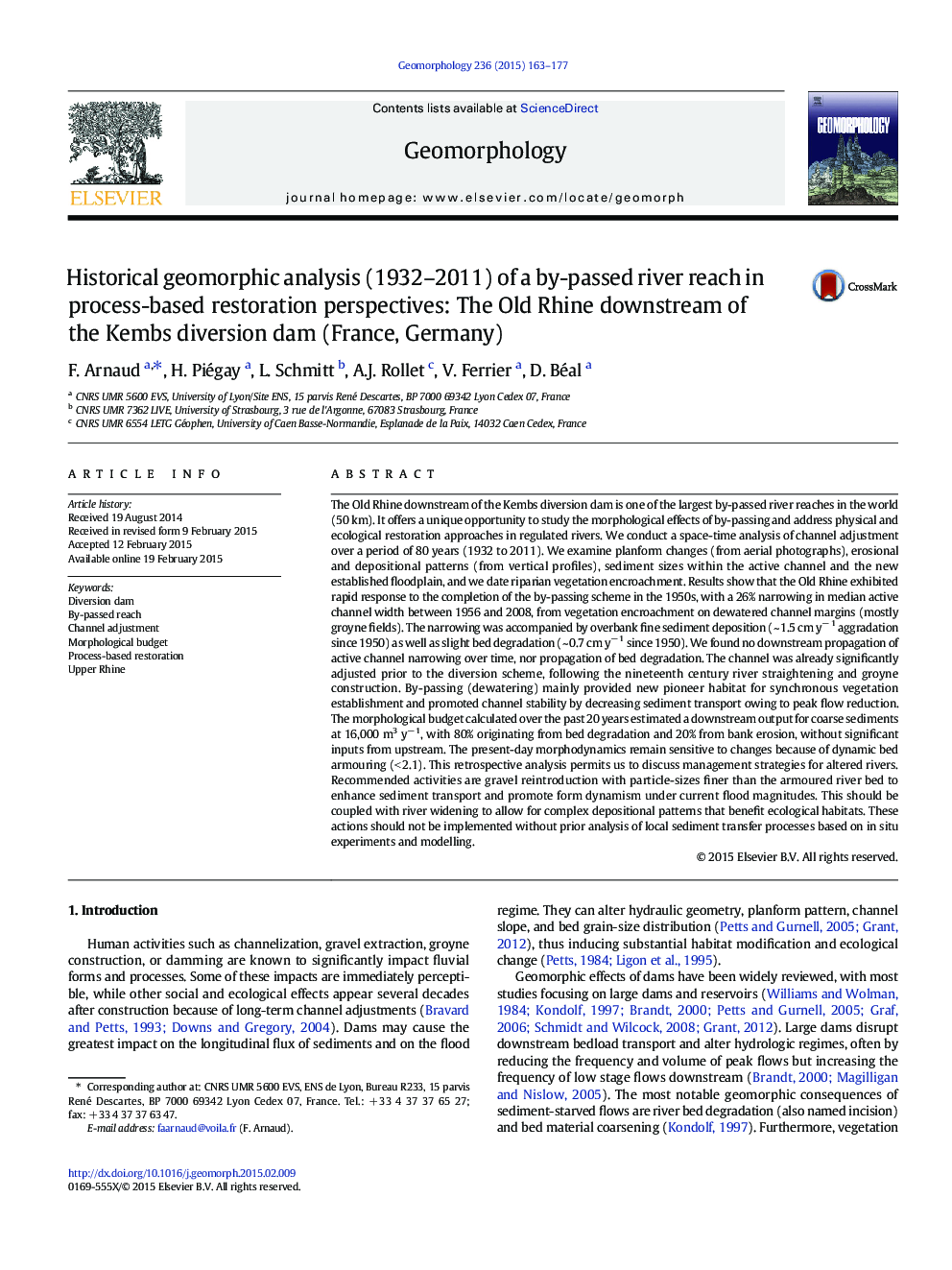| Article ID | Journal | Published Year | Pages | File Type |
|---|---|---|---|---|
| 4684258 | Geomorphology | 2015 | 15 Pages |
•Patterns of channel change in a by-passed river reach over 80 years•Planform, elevation and particle-size analysis using a morphological budget•16,000 m3 y− 1 coarse sediment loss since 1990 (80% from bed incision)•Artificial gravel augmentation to restore sediment flux
The Old Rhine downstream of the Kembs diversion dam is one of the largest by-passed river reaches in the world (50 km). It offers a unique opportunity to study the morphological effects of by-passing and address physical and ecological restoration approaches in regulated rivers. We conduct a space-time analysis of channel adjustment over a period of 80 years (1932 to 2011). We examine planform changes (from aerial photographs), erosional and depositional patterns (from vertical profiles), sediment sizes within the active channel and the new established floodplain, and we date riparian vegetation encroachment. Results show that the Old Rhine exhibited rapid response to the completion of the by-passing scheme in the 1950s, with a 26% narrowing in median active channel width between 1956 and 2008, from vegetation encroachment on dewatered channel margins (mostly groyne fields). The narrowing was accompanied by overbank fine sediment deposition (~ 1.5 cm y− 1 aggradation since 1950) as well as slight bed degradation (~ 0.7 cm y− 1 since 1950). We found no downstream propagation of active channel narrowing over time, nor propagation of bed degradation. The channel was already significantly adjusted prior to the diversion scheme, following the nineteenth century river straightening and groyne construction. By-passing (dewatering) mainly provided new pioneer habitat for synchronous vegetation establishment and promoted channel stability by decreasing sediment transport owing to peak flow reduction. The morphological budget calculated over the past 20 years estimated a downstream output for coarse sediments at 16,000 m3 y− 1, with 80% originating from bed degradation and 20% from bank erosion, without significant inputs from upstream. The present-day morphodynamics remain sensitive to changes because of dynamic bed armouring (< 2.1). This retrospective analysis permits us to discuss management strategies for altered rivers. Recommended activities are gravel reintroduction with particle-sizes finer than the armoured river bed to enhance sediment transport and promote form dynamism under current flood magnitudes. This should be coupled with river widening to allow for complex depositional patterns that benefit ecological habitats. These actions should not be implemented without prior analysis of local sediment transfer processes based on in situ experiments and modelling.
